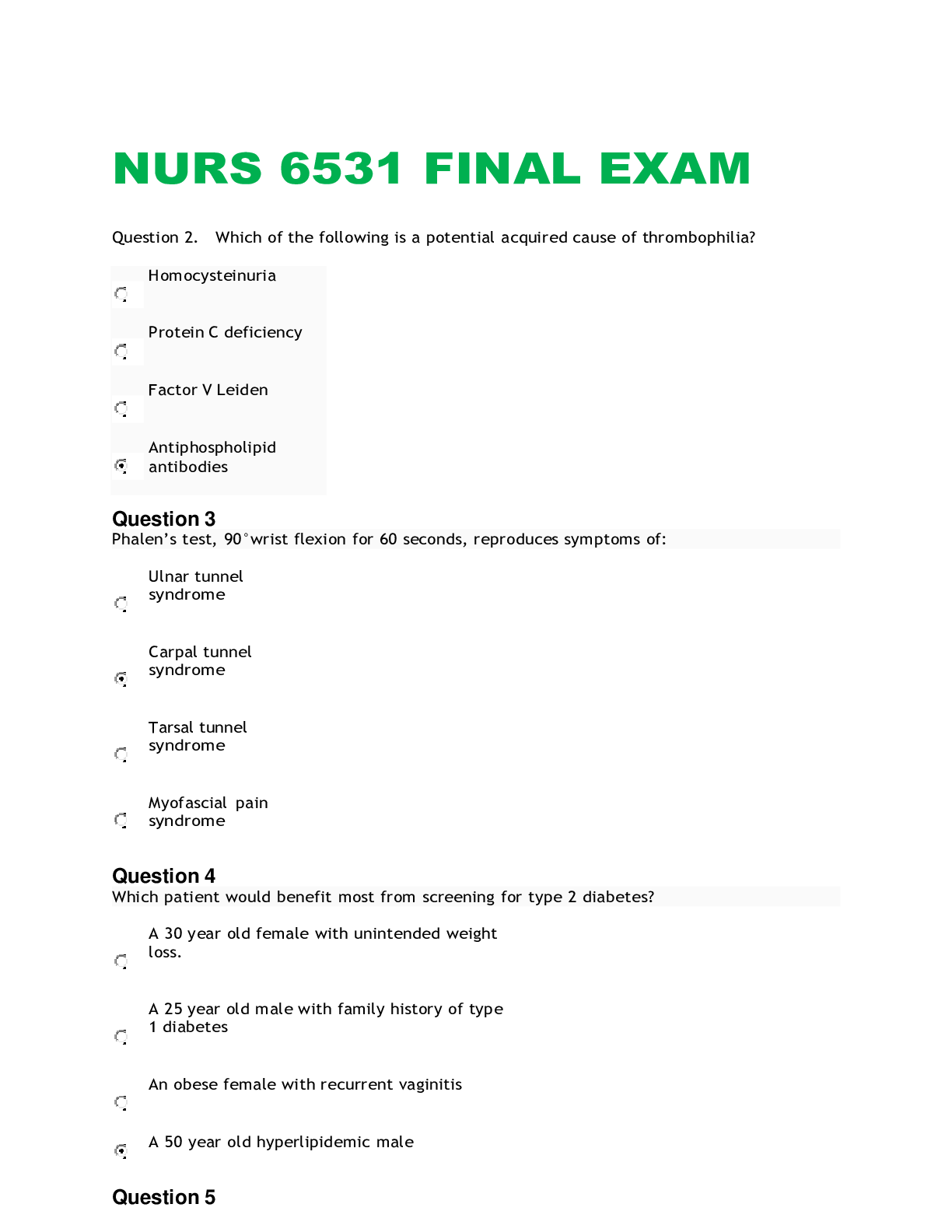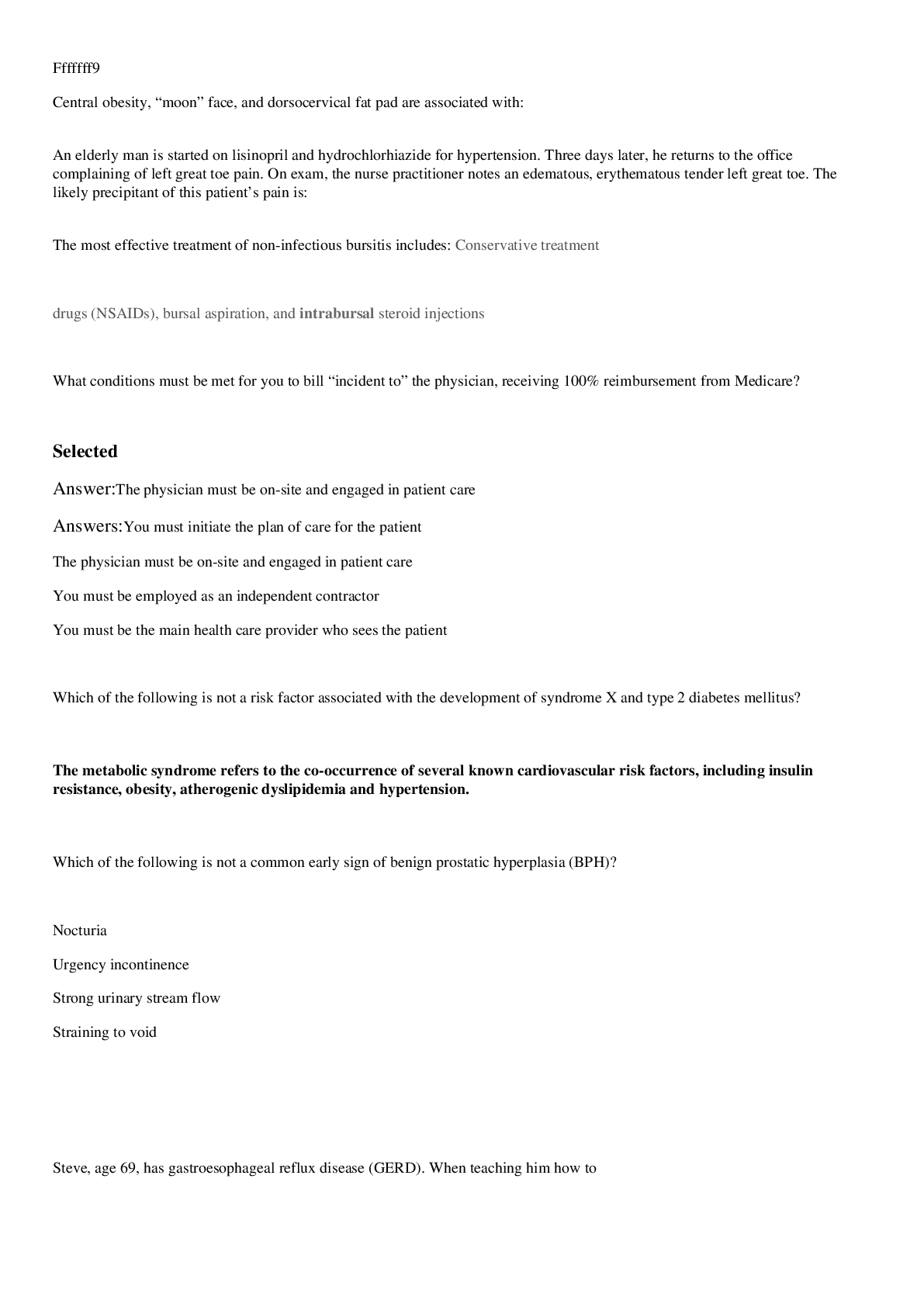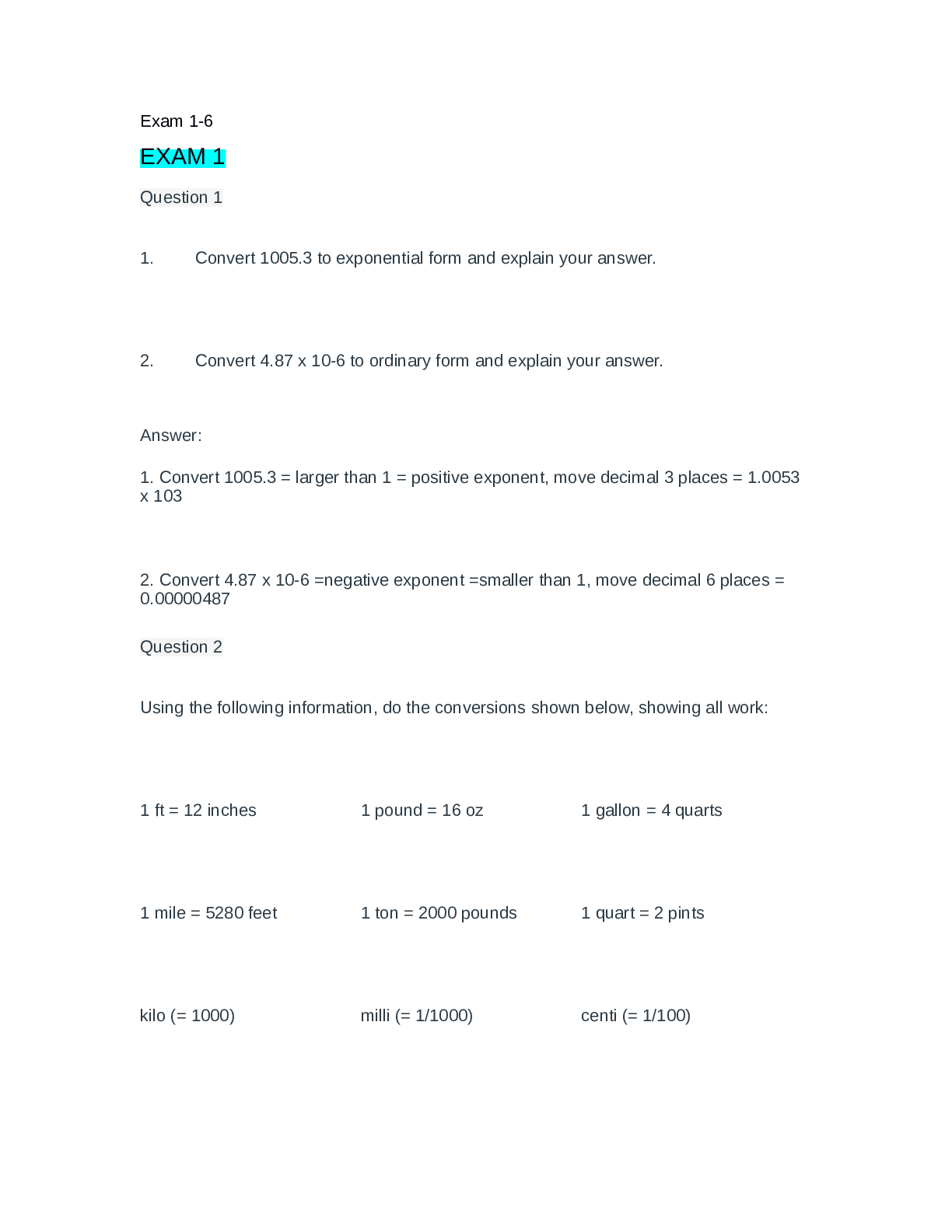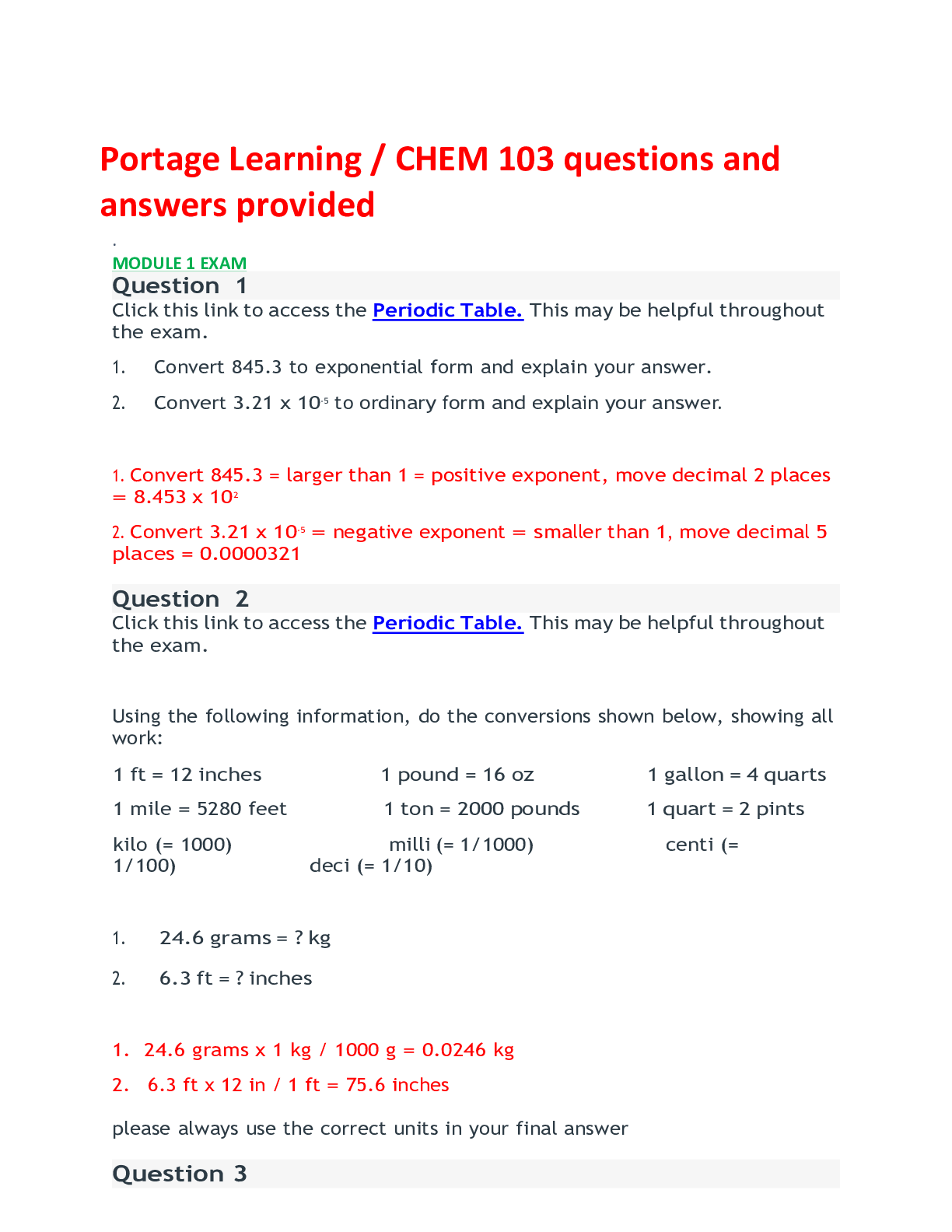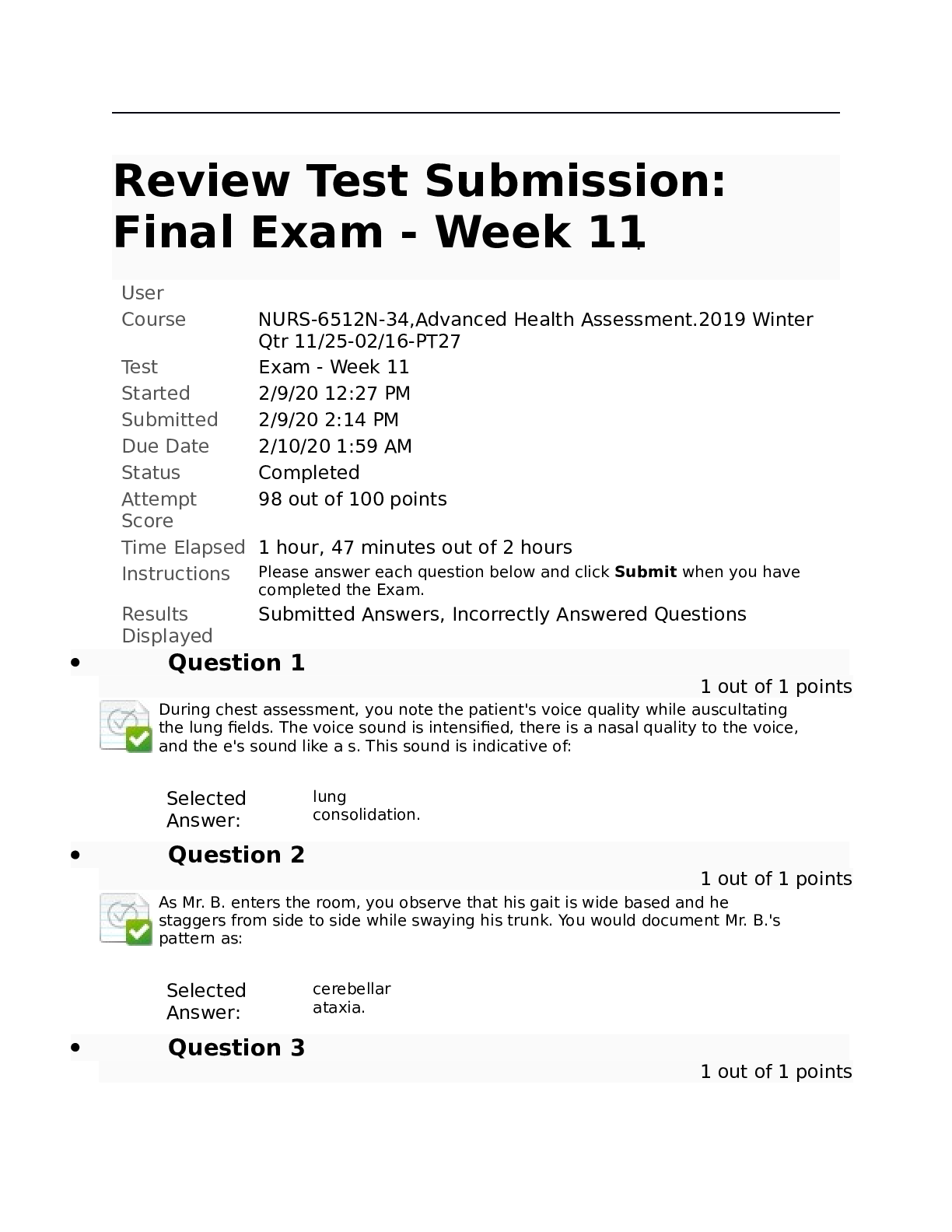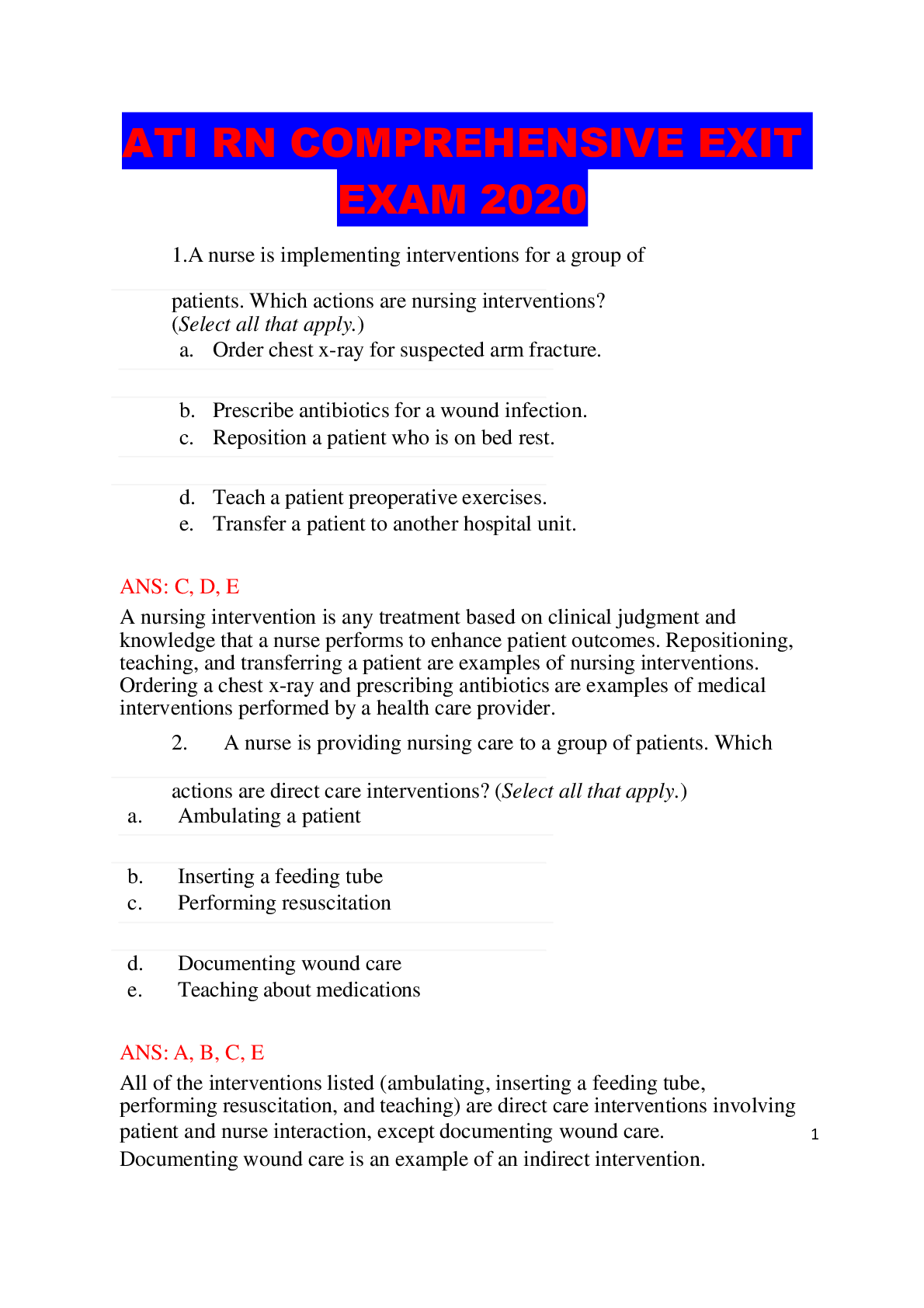*NURSING > Final Exam Review > Nursing 1 Final ANOTHER GUIDE Key Concepts for Final Exam (All)
Nursing 1 Final ANOTHER GUIDE Key Concepts for Final Exam
Document Content and Description Below
Nursing 1 Final ANOTHER GUIDE Key Concepts for Final Exam PAIN- Unpleasant sensory/emotional experience associated with actual or potential tissue damage What is THE MOST RELIABLE INDICATOR OF PAIN... ??? What the patient says it is! How does age and gender affect responses to pain? AGE-Children learn directly and indirectly from their parents or other care providers about how to respond to pain. The child discovers what level of pain justifies a complaint, how to express the complaint, how and when to stop complaining, and whom to approach for relief of pain. The elderly often hesitate to report their pain because of the belief that pain is a normal part of aging and therefore to be endured, or they may fear their expressions of pain will not be believed. They may also be fearful of drug side effects and the potential for addiction to pain medications. Many elderly persons have been “conditioned” to tolerate pain. GENDER- Most cultures expect little boys and men to minimize outward expressions of pain, whereas it is appropriate for little girls and women to acknowledge pain openly.Studies indicated that women believed their emotions of fear and anxiety affect their perception of pain adversely, whereas men focused more on the physical aspects. Women have a lower pain threshold and pain tolerance and seek medical help more readily than men; moreover, women’s responses to opioids and other analgesics also vary from men’s responses. Nociceptor- a free nerve ending that is a receptor for painful stimuli; protective role of pain does not permit the nerve endings to adapt to repeated painful stimuli Proprioception- nerve endings that contribute to the awareness of position Centrally generated pain- Complex regional pain syndrome EXAMPLE- Pain following spinal cord surgery, phantom pain as a result of peripheral nerve damage, Post stroke pain Peripherally generated pain EXAMPLES- alcohol-nutritional neuropathy, diabetic neuropathy, nerve root compression, nerve entrapment, pain of Gillian-Barre syndrome, some types of neck, shoulder, and back pain, trigeminal neuralgia Mixed Pain- Mixture of Nociceptive and neuropathic factors EXAMPLES- Fibromyalgia, myofascial pain, pain associated with HIV, Lyme disease, some headaches, and some types of neck, shoulder, and back pain Types of Pain Type of Pain Description Examples intractable pain Chronic and highly resistant to relief –non-relievable pain Pain that is due to a known cause- malignancy, nerve compression, phantom limb pain, spinal cord damage Neuropathic pain Pain that results from an injury to a nerve, malfunction of the neuronal transmission process, or impaired regulation Neuralgia pathological pain -Described as paroxysmal (sudden spasm-like pain) Causes include trauma, disease (poorly controlled diabetes, herpes zoster, late stages of cancer, chemicals (meds) amputation (also includes mastectomy) Burning, numbness, itching “pins and needles” Nociceptive pain Most common type of pain; occurs when pain receptors respond to stimuli that are potentially damaging- chemical, noxious thermal, mechanical. May occur as a result of surgery, trauma, or inflammation “ACHING” Somatic pain Visceral pain somatic pain Nociceptive pain that originates from the bone, joints, muscles, skin, or connective tissue Ankylosing spondylitis, cancer pain, labor pain, surgical trauma, wound and burn pain Nociceptive somatic pain can be either Cutaneous (from the skin or body surface) Paper cut or touching a hot surface or deep pain involving tissues, such as tendons, joints, bone, and nerves (Deep pain lasts longer). Rheumatoid arthritis and osteomyelitis. visceral pain Pain arising from the body organs or gastrointestinal tract; any of the large organs within a body cavity; stimulation of deep pain receptors most often in the abdominal cavity or thorax. The thoracic, abdominal, pelvic, or cranial cavities Associated with acute appendicitis, cholecystitis, renal and ureteral colic, biliary and pancreatic tract inflammation, gastroduodenal disease, cardiovascular disease, and pleurisy. referred pain Occurs in an area that is distant from the original site MI pain may present down the left arm, in the jaw or through the back. breakthrough pain Transitory increase in pain that occurs in addition to persistent pain- Commonly seen in more advanced stages of cancer and late stage diseases of AIDS Spontaneous and unpredictable (IDEOPATHIC) or by certain activities like walking, sitting, or coughing (INCIDENTAL) Phantom pain Pain that is perceived to originate from an area that has been surgically removed Pt with an amputated limb can still perceive that the limb exists and will experience burning, itching, and deep pain in the area Psychogenic pain Pain that is believed to arise from the mind. The patient perceives the pain despite the fact that no physical cause can be identified Most pt. with chronic pain has some degree of psychological disturbance- anxious, depression, impaired coping mechanisms. “Psychogenic pain” is a simple label for all kinds of pain that can be best explained by psychological problems (Handout from class) Radiating pain Starts at the origin but extends to other locations Pain of a severe sore throat may extend to ears and head. GERD may radiate out from the sternum and involve the entire upper chest area Know differences between acute and chronic pain, S/S, examples of each and treatment options of each. ACUTE- Short duration and is generally rapid in onset *can be a warning sign *Activation of SNS *Common experience *Usually responds to treatment Those with acute pain may exhibit: hypertension, tachycardia, diaphoresis, Shallow respiration, restlessness, facial grimacing, guarding behavior, pallor, and Pupil dilation Management of acute pain- Find and remove the underlying cause CHRONIC- defined as a sudden or slow onset of mild to severe pain. It can be constant or recurring without an anticipated or predictable end and usually lasts longer than 6 months *NON cancer- Persists or recurs for indefinite period (longer than 3-6 months Onset is gradual, poorly localized (hard to pinpoint) Often accompanied by depression, psychological factors, difficult to treat *Cancer- Malignancy *Caused by cancer/side effects of treatment *Persistent pain *Break through pain- breaks through medication treatment *Episodic ………………………………………continued……………………………….. [Show More]
Last updated: 1 year ago
Preview 1 out of 25 pages
Instant download
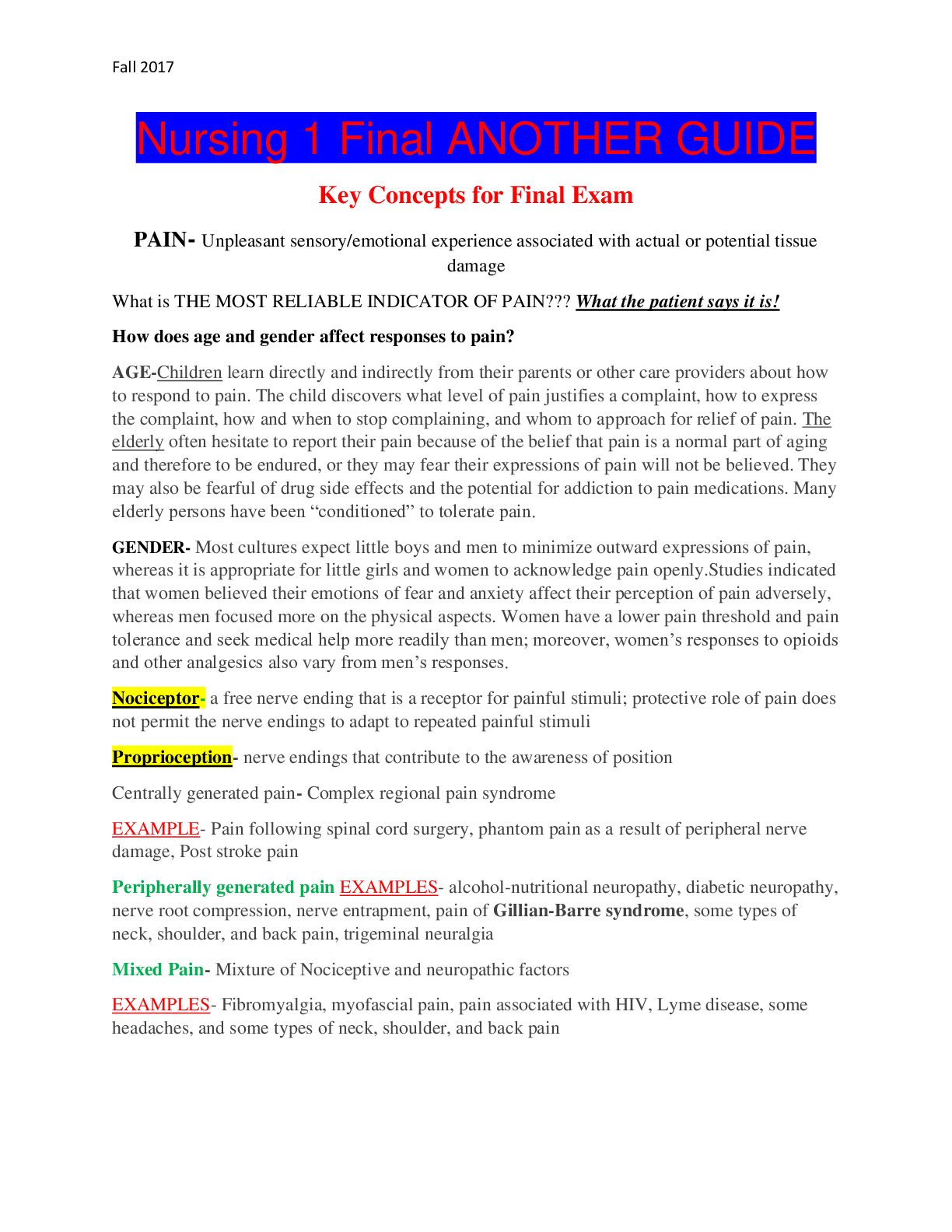
Buy this document to get the full access instantly
Instant Download Access after purchase
Add to cartInstant download
Reviews( 0 )
Document information
Connected school, study & course
About the document
Uploaded On
Jan 16, 2021
Number of pages
25
Written in
Additional information
This document has been written for:
Uploaded
Jan 16, 2021
Downloads
0
Views
70

